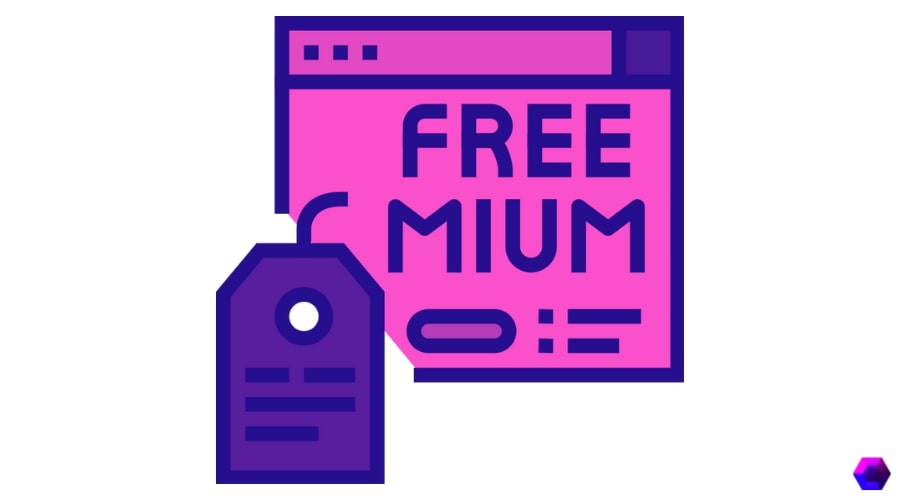Freemium Definition Examples Pros Cons for Business

Contents
- 1 Freemium: Definition, Examples, Pros & Cons for Business
- 1.1 What Is Freemium?
- 1.2 Understanding Freemium
- 1.3 Advantages and Disadvantages of Freemium
- 1.4 How to Convert a Free User to a Paid User
- 1.5 Examples of Freemium
- 1.6 Is a Free Trial a Freemium?
- 1.7 Do Freemiums Increase the Number of Customers?
- 1.8 Which Companies Use Freemium?
- 1.9 Can Freemium Lead to a Loss of Income?
Freemium: Definition, Examples, Pros & Cons for Business
What Is Freemium?
Freemium is a business model that offers basic features of a product or service to users at no cost and charges a premium for advanced features. A company using a freemium model provides basic services on a complimentary basis, often in a "free trial" or limited version, while also offering more advanced services or additional features at a premium.
Key Takeaways
- Freemium is a business model in which a company offers basic or limited features to users at no cost and then charges a premium for advanced features.
- The freemium business model dates back to the 1980s, though the term was coined in 2006.
- Freemium models are especially popular among software applications and internet-based businesses.
- This type of business model has the advantage of acquiring a large set of initial users, especially when there’s no cost associated with trying out an app or a service.
- Ultimately, for the freemium model to work, companies must ensure their premium users can access more upgraded features, such as increased storage or customizations, and additional customer service.
Understanding Freemium
Under a freemium model, a business gives away services at no cost to establish the foundation for future transactions. By offering basic-level services for free, companies build relationships with customers, eventually offering them advanced services, add-ons, enhanced storage or usage limits, or an ad-free user experience for an extra cost.
The freemium model works well for internet-based businesses with small customer acquisition costs but high lifetime value. It allows users to utilize basic features of a software, game, or service for free, then charges for "upgrades" to the basic package. It is a popular tactic for companies starting out as they try to lure users to their software or service.
Since the 1980s, freemium has been common practice with many computer software companies. They offer basic programs that are free for consumers to try but have limited capabilities; to get the full package, you have to upgrade and pay a charge. It is also a popular model for gaming companies. All people are welcome to play the game for free, but special features and more advanced levels are only unlocked when the user pays.
Freemium games and services can catch users off guard, as they may not be aware of how much they (or their kids) are spending on the game since payments are made in small increments.
The term freemium was coined in 2006 by Jarid Lukin of Alacra, a provider of corporate information and workflow tools.
Advantages and Disadvantages of Freemium
Freemium business models have the advantage of acquiring a large set of initial users under a pressure-free trial, especially when there’s no cost associated with trying an app or a service. Most people are willing to take a new app or service for a spin, giving the company an easy way to acquire potential users and study their usage behavior. In many cases, companies still benefit from their free users: though these users may not be explicitly purchasing upgrades or items, the company can collect their user information and data, show them ads to make revenue, and boost their own business numbers.
Especially for startups or companies trying to build a following for their product, the freemium model brings brand awareness without requiring a lot of customer support.
On the flipside, some disadvantages of the freemium model are that free users never convert to paid users. Though some companies are perfectly happy with their free users (and have accounted for these free users to make up a majority of their forecasted earnings through their ad consumption or time spent on the app), they may offer too many features on the free version that prevents users from ever upgrading to the premium version.
In addition, users may eventually get tired of a free version as it doesn’t offer additional features but encounter other barriers or an unwillingness to upgrade.
- Companies can easily acquire potential users and collect their user information and data
- They can make revenue on ads and boost their own business numbers
- For startups, it provides brand awareness without requiring a lot of customer support.
- Free users never convert to paid users
- Too many features on the free version may prevent users from upgrading
- Users may get tired of a free version that doesn’t offer additional features
How to Convert a Free User to a Paid User
Converting a free user to a paid one is at the crux of many businesses’ dilemmas. Especially when a business’ longevity is hinging on converting users, there can be additional pressure to "upsell" their free users and make a larger margin of profit off them. Ultimately, for the freemium model to work and move people along to more expensive plans, companies must do a mix of the following:
- Limit the features offered to free users, so that they will be enticed to upgrade for a better experience.
- As free users increasingly use the product or service, offer increased storage, more flexibility, customizations, or enhanced usage limits.
- Offer additional personalized or customer service associated with an account.
Examples of Freemium
Spotify is one of the best-known companies with a highly successful freemium model; the online music streaming service boasts 381 million users, and about 172 million of those users are paid subscribers.
While users of the free version of Spotify have the ability to access all the same music as premium users, they have to listen to ads and have a limited number of "skips" on songs they want, among other drawbacks. For some, these limitations don’t pose a challenge. But for music aficionados who want more control and higher audio quality, paying for the premium version is well worth the price.
Another example of a company that uses the freemium business model is Skype, a firm that allows you to make video or voice calls over the internet. There’s no cost to set up a Skype account, and the software can be downloaded for free. But for more advanced services, such as placing a call to a landline or a mobile phone, you do have to pay, albeit a small amount compared to conventional phone company charges.
A third employer of the freemium model—one of the earliest to do so—is King, the developer of the highly popular internet game Candy Crush Saga. The addictive activity, available on the king.com site, on Facebook, and on apps, is free to play. It allows users an allotted number of lives within a certain timeframe but charges for extra lives if someone wants to play more during that window. Users also can pay for "boosters" or extra moves to help win the levels and advance through the game more easily.
Is a Free Trial a Freemium?
Free trials and freemiums are slightly different; free trials are typically time-bound and only allow a user to "test out" a few parts of a product or service. Meanwhile, freemium models allow their free users to access the full application indefinitely.
Do Freemiums Increase the Number of Customers?
Freemium models lower new users’ barriers to entry, increasing a business’ number of total customers by allowing some to test out a limited version of the product without financial commitment.
Which Companies Use Freemium?
Many companies use freemium models, including Spotify, Dropbox, Hinge, Slack, and Asana.
Can Freemium Lead to a Loss of Income?
Theoretically, businesses with freemium models can lose money if their conversion rate to premium users is too low.



